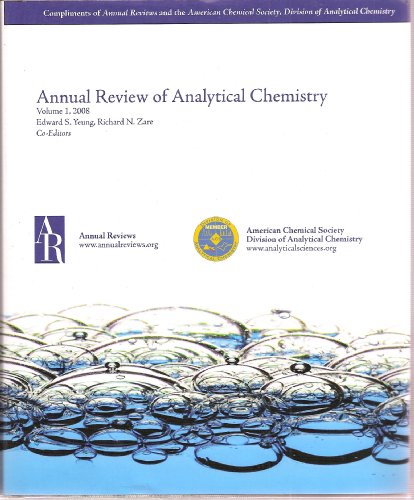Probing and Visualizing Interfacial Charge at Surfaces in Aqueous Solution.
IF 7.5
2区 化学
Q1 CHEMISTRY, ANALYTICAL
Annual Review of Analytical Chemistry
Pub Date : 2022-02-08
DOI:10.1146/annurev-anchem-121521-122615
引用次数: 6
Abstract
Surface charge density and distribution play an important role in almost all interfacial processes, influencing, for example, adsorption, colloidal stability, functional material activity, electrochemical processes, corrosion, nanoparticle toxicity, and cellular processes such as signaling, absorption, and adhesion. Understanding the heterogeneity in, and distribution of, surface and interfacial charge is key to elucidating the mechanisms underlying reactivity, the stability of materials, and biophysical processes. Atomic force microscopy (AFM) and scanning ion conductance microscopy (SICM) are highly suitable for probing the material/electrolyte interface at the nanoscale through recent advances in probe design, significant instrumental (hardware and software) developments, and the evolution of multifunctional imaging protocols. Here, we assess the capability of AFM and SICM for surface charge mapping, covering the basic underpinning principles alongside experimental considerations. We illustrate and compare the use of AFM and SICM for visualizing surface and interfacial charge with examples from materials science, geochemistry, and the life sciences. Expected final online publication date for the Annual Review of Analytical Chemistry Volume 15 is June 2022. Please see http://www.annualreviews.org/page/journal/pubdates for revised estimates.探测和可视化水溶液中表面的界面电荷。
表面电荷密度和分布在几乎所有的界面过程中都起着重要作用,例如影响吸附、胶体稳定性、功能材料活性、电化学过程、腐蚀、纳米颗粒毒性以及细胞过程,如信号传导、吸收和粘附。了解表面和界面电荷的不均匀性及其分布是阐明反应性、材料稳定性和生物物理过程的潜在机制的关键。原子力显微镜(AFM)和扫描离子电导显微镜(SICM)非常适合通过探针设计的最新进展、重要的仪器(硬件和软件)开发以及多功能成像协议的发展来探测纳米级的材料/电解质界面。在这里,我们评估了AFM和SICM用于表面电荷映射的能力,涵盖了基本的基础原理和实验考虑。我们通过材料科学、地球化学和生命科学的例子,说明并比较了AFM和SICM在可视化表面和界面电荷方面的应用。《分析化学年度评论》第15卷预计最终在线出版日期为2022年6月。请参阅http://www.annualreviews.org/page/journal/pubdates用于修订估算。
本文章由计算机程序翻译,如有差异,请以英文原文为准。
求助全文
约1分钟内获得全文
求助全文
来源期刊

Annual Review of Analytical Chemistry
CHEMISTRY, ANALYTICAL-SPECTROSCOPY
CiteScore
14.80
自引率
1.20%
发文量
15
期刊介绍:
The Annual Review of Analytical Chemistry, launched in 2008, offers a comprehensive perspective on the field, drawing from diverse disciplines such as biology, physics, and engineering, with analytical chemistry as the central theme. The journal's current volume has transitioned from gated to open access through Annual Reviews' Subscribe to Open program, with all articles published under a CC BY license.
 求助内容:
求助内容: 应助结果提醒方式:
应助结果提醒方式:


